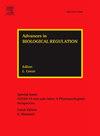实体胰腺癌分析揭示了免疫和造血干细胞和DNA损伤修复特征,以区分不同的癌症亚型
IF 2.4
Q1 Biochemistry, Genetics and Molecular Biology
引用次数: 0
摘要
目的免疫、干细胞和DNA损伤修复(DDR)是肿瘤发生和耐药的关键。随着多组学技术的进步,对与免疫、干细胞和DDR相关的癌症的探索引发了人们的兴趣,但将这些水平结合起来分析多种癌症仍然不足。方法基于13个与干性、免疫和DDR相关的基因集的富集水平,对31种TCGA肿瘤类型的9906个实体瘤样本进行聚类。此外,基于这13个基因集的富集水平,构建了一个软集合模型,通过其他组学数据预测癌症亚型。结果我们确定了四种胰腺癌亚型,分别为C1、C2、C3和C4,它们具有不同的分子和临床特征,包括免疫微环境、干性、基因组不稳定性、肿瘤内异质性、甲基化水平、肿瘤进展、对化疗和免疫治疗的敏感性以及生存预后。软集成模型在两个乳腺癌数据集(基因表达水平)、一个胰腺癌蛋白质组学数据集(蛋白质表达水平)和一个胰腺癌细胞系数据集(细胞系基因表达水平)中验证了这种亚型方法。结论基于免疫、干性和DDR特征的亚型为研究癌症生物学提供了新的视角,并有望改善癌症的临床管理。本文章由计算机程序翻译,如有差异,请以英文原文为准。
Solid pancancer analysis reveals immune and hematopoietic stem cell and DNA damage repair signatures to distinguish different cancer subtypes
Purpose
Immunity, stemness, and DNA damage repair (DDR) are crucial for cancer development and therapy resistance. With advancements in multiomics technology, the exploration of cancers related to immunity, stemness, and the DDR has triggered interest, but the combination of these levels for analyzing multiple cancers remains insufficient.
Methods
In this study, 9906 solid tumor samples from 31 TCGA cancer types were clustered on the basis of the enrichment levels of 13 gene sets associated with stemness, immunity, and DDR. Moreover, a soft ensemble model was constructed on the basis of the enrichment levels of these 13 gene sets to predict cancer subtypes via other omics data.
Results
We identified four pancancer subtypes, termed C1, C2, C3, and C4, which presented distinct molecular and clinical features, including the immune microenvironment, stemness, genome instability, intratumor heterogeneity, methylation levels, tumor progression, sensitivity to chemotherapy and immunotherapy, and survival prognosis. The soft ensemble model validated this subtyping method in two breast cancer datasets (gene expression level), a pancancer proteomic dataset (protein expression level), and a pancancer cell line dataset (cell line gene expression level).
Conclusion
Our findings indicate that immune, stemness, and DDR signature-based subtyping offers new perspectives on cancer biology and holds promise for improving the clinical management of cancers.
求助全文
通过发布文献求助,成功后即可免费获取论文全文。
去求助
来源期刊

Advances in biological regulation
Biochemistry, Genetics and Molecular Biology-Molecular Medicine
CiteScore
8.90
自引率
0.00%
发文量
41
审稿时长
17 days
 求助内容:
求助内容: 应助结果提醒方式:
应助结果提醒方式:


